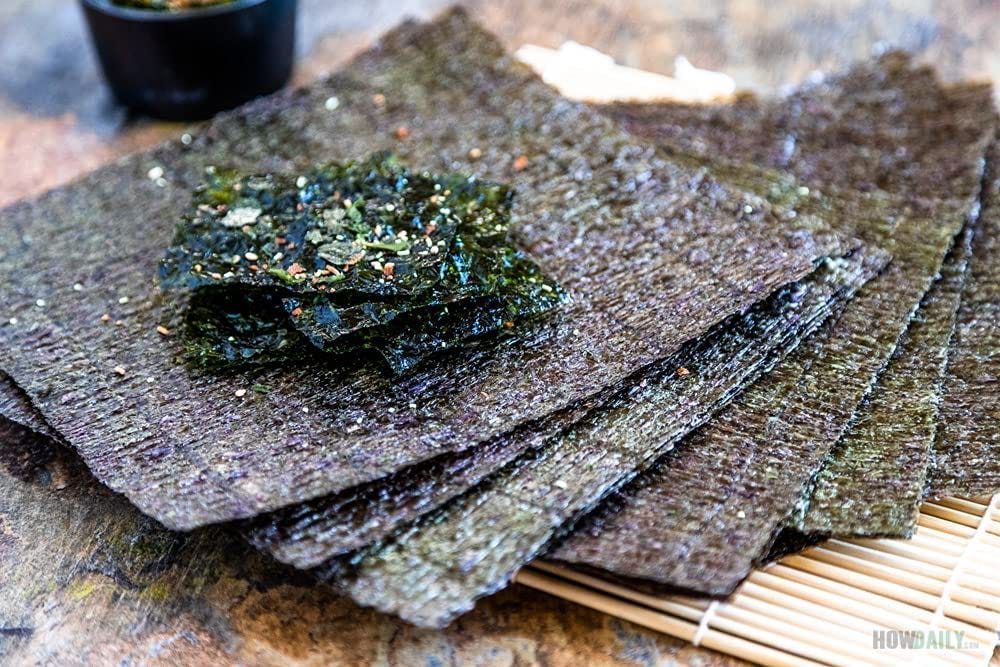Seaweed makes its own clouds
It sounds like nonsense, but it’s biochemistry.
When we talk about next-generation ways of fighting climate change, we sometimes divide them between techniques to enhance albedo and techniques to capture carbon. It’s a useful framework — I used it just the other day. But it’s also an oversimplification, because marine carbon dioxide removal will probably enhance albedo too.
The mechanism sounds ridiculous, but it checks out: seaweed makes its own clouds.
A bit of biochemistry is unavoidable here. Like all ocean creatures, seaweed has to adapt to changes in how salty the water around it is. If it can’t adjust, it won’t last long— when the water gets saltier, it will shrivel up as water gets pulled out of its cells. If the water gets less salty, too much water will rush in, and its cells swell up and eventually burst.
This problem of “osmoregulation” is one evolution has solved many times in many different ways over earth history. In many marine photosynthesizers, the solution depends on a small organic molecule derived from the amino acid methionine and made of carbon, hydrogen, oxygen, and sulfur, which goes by the unlovely name of dimethylsulfoniopropionate — or DMSP, to friends. DMSP regulates osmosis in a huge range of marine plants — life in the ocean wouldn’t work without it.
Convergent evolution is a helluva drug: many evolutionarily distinct types of marine life all produce DMSP, which suggests the compound has evolved independently many times over. As a result, there are now a few septillion DMSP-producing microorganisms swimming around in the world’s oceans. Each contains a miniscule amount of DMSP.
But it’s not just tiny seaweed that makes this stuff: many species of macroalgae also produce DMSP — sometimes even more efficiently than plankton. (And yes, that includes the seaweed you wrap sushi in.)
All of these organisms eventually die. And when they do, enzymes will degrade their DMSP into simpler chemicals, including dimethyl sulfide (DMS). Some of the DMS will waft up into the atmosphere, where it will break down again on contact with hydroxyl radicals. That reaction produces a bunch of compounds, including sulfur dioxide: a molecule water loves to form droplets around.
Next time you’re at the beach and see a pretty fluffy cloud out over the sea, take a minute to ponder the fact that you’re looking at water droplets clumping around particles of dead seaweed. Because the turn of phrase in the headline is not even poetic licence: seaweed actually makes its own clouds.
The insight isn’t new: the original paper setting out this mechanism was published in Nature all the way back in 1987. Scientists disagree about how big the effect is, the physics get kind of hairy. But some believe a substantial portion of oceanic cloud cover forms around cloud condensation nuclei volatilized from dying phytoplankton.
Naturally, we’re really not sure how viable it is to try to increase cloud cover over the ocean by fertilizing seaweed. What we do know is that phytoplankton populations are in long term decline as is marine cloud cover, especially since we began to clean up man-made sources of sulfur dioxide. More and more researchers are now saying declining cloud cover is one key reason global temperatures are going up as fast as they are.
So it’s plausible —not proven, but plausible— that fertilizing seaweed could end up cooling the planet not just by locking greenhouse gasses down in the deep ocean but also more directly, by increasing albedo through cloud cover. I know of at least one research group looking to measure precisely that effect as part of an open ocean fertilization trial.
I don’t know if this will work. But I do know that it would be criminal not to find out.



Hi Quico, marine permaculture is a way to promote a range of climate cooling methods including DMS and biomass production. Kelp forests are in decline due mainly to ocean warming. For example, the Santa Barbara Channel used to have a thousand square km of giant kelp, but now has almost none. Also other places like Tasmania the water is now too hot for kelp. Marine permaculture can markedly increase kelp productivity by sinking kelp farms using deep cycling each night to below the thermocline where they suck up nutrients, and then raising the farm to the surface at dawn. Dr Brian Von Herzen, head of the Climate Foundation and of rebrighten.org, is the world leading expert on this seaweed technology. Brian's recent conversation with Metta Spencer is a helpful introduction - https://projectsavetheworld.substack.com/p/episode-660-marine-permaculture
Enjoying this and other posts about climate change. https://open.substack.com/pub/read/p/when-youre-in-a-210-degree-room-you?utm_source=share&utm_medium=android&r=41ylwe